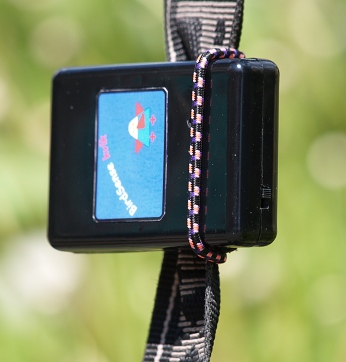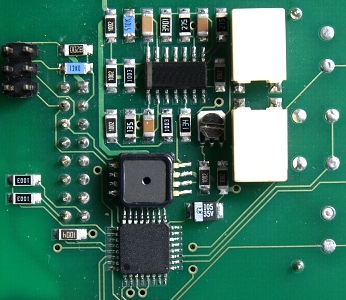After the two instruments "Brauniger IQ-Sonic" and "Renschler Solario" a new small acoustic variometer without a display is available on the market now. And what is more, the surprisingly low price of it can certainly be interesting for everybody.
Handling
You can see nothing on the variometer from the outside but one switch which turns on the instrumet. Inside you can find four small switches which allow to set parameters and one small rotary potentiometer for shifting both zero of a vario and a threshold of an acoustic for rising up. But it will be described in detail later on.
Power and consumption
The variometer is powered by one E-Block with a voltage of 9V and while working the consumption varies around 10mA. It means a quality alcaline battery will last about 50 operating hours while rechargeable NiMH or NiCd one (200mAh) can last 20 hours roughly. Besides, after every switching on the instrument indicates at first the state of the battery by several beeps (from 1 to 5). Exactly said, what is the voltage of the battery. Five is the best, one is the worst.
Acoustic
Sounds of the acoustic are very similar to Digifly and Aircotec variometers and I can subjectively say that it's a joy to listen to it. And what is more, a shifting both zero of the vario and the threshold of an acoustic for rising up by the only one correction element is much easier and more understandable than Brauniger IQ-Sonic offers. The threshold of the acoustic signal for sinking (Sink Alarm) is completely separated from that. You can precisely set this threshold to four different values: -1.5m/s, -2m/s, -2.5m/s or -3m/s with a help of two small switches inside. A volume of sounds can be set to "lower" or "louder" one by the next small switch. Naturally, a default setting is "lower" because most of pilots will certainly place this small unit very close to the head.
And one more rare specialty now. The usual silent between zero and Sink Alarm is cleverly utilized to make a special series of beeps which indicates its approximate value by a number of the beeps (if one of the small internal switches is set to "ON" position). Clearly said, when the small subsiding reaches a value from 0 to -1m/s the instrument can sound a series of simple beeps ("beep....beep"), when the small subsiding reaches the value from -1 to -2m/s the instrument can sound a series of double beeps ("beep-beep....beep-beep") and when the small subsiding reaches the value from -2 to -3m/s the instrument can sound a series of triple beeps ("beep-beep-beep....beep-beep-beep"). I can't explain it more clearly, it's definitely better to hear it. Although the default setting of this switch number 2 is "OFF" (the function is turned off), I personally believe that every pilot will certainly leave this switch in "ON" position forever after once testing it.

|

Temperature stability
It's pretty hard to measure this parameter when the instrument has no display. Anyway, even decreasing 30°C in a temperature had no bearing on zero of vario which had been set in the immediate vicinity of the acoustic threshold for rising up. And because the variometer with display BirdSense Base was cooled down for testing purpose at the same time and its electronic circuits are the same, we can say now that the temperature stability is slightly better then those variometers made by Digifly company. Zeros of altimeters shifted down only 11 meters.
Technology
Naturally, we couldn't withstand the curiosity and wee took the variometer Birdsense Base to pieces to see the technology of the production. As you can clearly see on the next picture, a professional surface mounting of SMD (Surface Mounted Device) circuits are used in the inside. We can say now a long-lasting reliability of the instrument should have been very high.

Attachment
The instrument is equiped with a loop made from rubber (circular diameter of 4mm) and it can be very quickly and easily attached to whichever strap, a tube or a rod (see the picture). Because of small dimensions the variometer can be also places right inside a helmet, particularly that teary one which has an empty space in the inside. All you need then is to put your hand behind your neck before a take-off and turn the small switch to the "ON" position.
|


